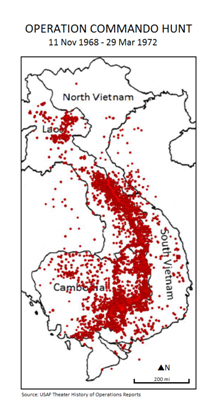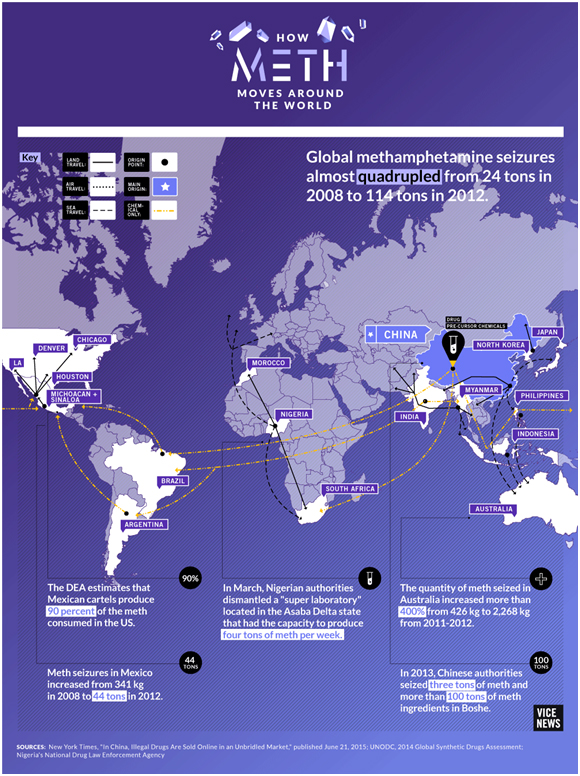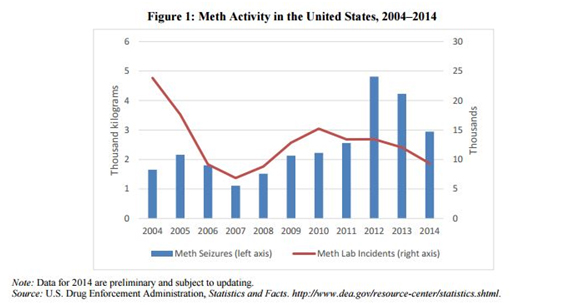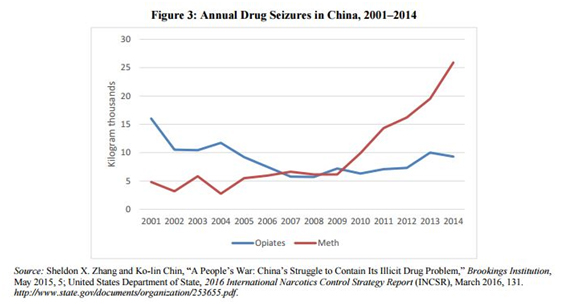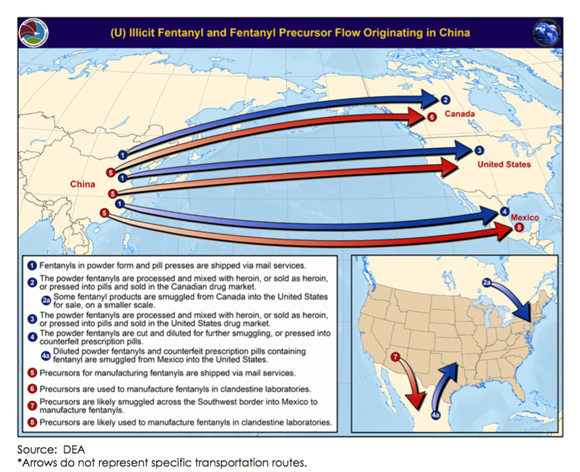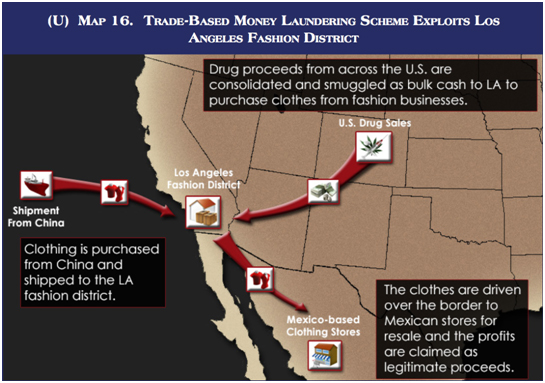For links and videos see article source.....
Posted for fair use.....
http://smallwarsjournal.com/jrnl/ar...airpower-alone-can’t-win-america’s-small-wars
Precision-Guided Diminishing Returns: Why Airpower Alone Can’t Win America’s Small Wars
by Michael T. Lippert
Journal Article | April 15, 2017 - 2:47am
A Small Wars Journal and Military Writers Guild Writing Contest Finalist Article
Precision-Guided Diminishing Returns: Why Airpower Alone Can’t Win America’s Small Wars
Michael T. Lippert
Inherent Resolve: By The Numbers
Between August 8th 2014, and December 15th 2016, the United States and its allies conducted 16,806 strikes on Islamic State (ISIL) targets throughout Iraq and Syria in the conduct of Operation Inherent Resolve (OIR).[1] The coalition flew 127,764 sorties over the 857-day air campaign, and 4,500 coalition sorties were flown per month on average. Per the Combined Forces Air Component Commander (CFACC), approximately fifty percent were tactical sorties, and half of those employed ordnance.[2] This means that on average, 1,125 strikes were conducted per month, or nearly forty per day, for over two years in an effort to meet the ends of the nine lines of effort outlined by President Obama in November 2014.[3] According to quarterly reports released by the Lead Inspector General for Overseas Contingency Operations, airstrikes generally account for only three or four of the nine lines of effort.[4] These are namely “Denying ISIL Safe Haven” through direct action and attrition, “Disrupting ISIL’s Finances” via strikes on banks oil infrastructure, indirectly “Supporting Effective Governance in Iraq” by supporting Iraqi Security Forces’ operations, and “Interrupting the Flow of Foreign Fighters” through coordinated interdiction operations with Turkish forces[5] (and similar operations). These operations cover less than half of the lines of effort yet are by far the costliest, accounting for at least 63% of the operation’s $12.3 million daily cost[6] – a figure which is an increase over the approximate $10 million per day cost reported a year prior.[7] The air war over Iraq and Syria is costing the US an average of at least $7.8 million per day and this cost is rising.
This gargantuan effort has not been void of results. Since kinetic air operations began over Iraq and Syria, over 32,000 targets have reportedly been destroyed. The preponderance of these targets has been buildings and fighting positions, closely followed by staging areas and oil infrastructure.[8] Another five hundred other targets engaged have been tactical vehicles, artillery pieces, and tanks that were stolen from Syrian or Iraqi forces. Perhaps more astounding is that some estimates claim as many as 50,000 ISIL fighters have been killed.[9] In 2015, Pentagon officials claimed some 1,000 fighters per month killed by airstrikes, eliminating “the majority of (ISIL) fighting capability.”[10] Such losses seem to correlate with the apparent net territorial loss of nearly 50,000 square kilometers in Iraq and Syria since the operation began in 2014.[11]
That said, in 2014, the US intelligence community reported that the approximate number of Islamic State fighters was between 20,000 to 30,000.[12] In October of 2015, a little over a year later and after the execution of 7300 strikes over 57,800 combat sorties and an overall cost of $5.1 billion, the number of ISIL troops was still estimated at approximately 20,000 to 30,000.[13] Looking forward another year to September 2016, despite increased rates of strikes and a new campaign cost of $9.3 billion, the reported ISIL strength was 19,000 to 25,000.[14] This means that the coalition has already liquidated ISIL’s fighting strength approximately twice over. The Islamic State’s ability to recruit and import new fighters has been able to effectively keep up with their rate of attrition on the battlefield. Of further concern is that although there are reports of significant territorial losses, ISIL has gained new territory in both Iraq and Syria, and spread its influence to seven more nations throughout the Middle East.[15] This means continuing gains despite other losses and new populations to influence and recruit – which has enabled ISIL to maintain its fighting weight despite the ongoing coalition efforts.
Lessons from the Past
http://smallwarsjournal.com/sites/default/files/lippert1.jpg
Figure 1. Reported Locations of Strikes Flown During Commando Hut (Graphic created by the author by data from Lt Col Robertson, J. A., Burr R., and Barth, B.)
In 1972, the US was engaged in a high tempo aerial interdiction campaign in a different corner of the Asian continent. Operation Commando Hunt was a four-year interdiction campaign aimed at denying the flow of troops and supplies from North Vietnam to the Viet Cong insurgency in South Vietnam via the “Ho Chi Minh Trail.” The trail ran in the Western valley of the Annamite mountain range from North Vietnam, through Central and Southern Laos and North Eastern Cambodia, to South Vietnam. Through the four years of Commando Hunt, some three million tons of ordnance were delivered by over 400,000 sorties, at an average of over 280 sorties and $2.6 million per day.[16] Commando Hunt (within $2 million of the daily cost of Inherent Resolve when accounting for inflation) was an extensive campaign that sought to use airpower to create inefficiencies in the enemy’s operations such that cost of doing business would break the enemy’s will to continue. Like OIR, Commando Hunt racked up a significant number of targets destroyed during its execution. Over the four-year campaign, over 23,000 trucks were reported destroyed along the Ho Chi Minh trail. These statistics, while impressive, raise questions. During Commando Hunt VII (Nov 1971 – Mar 1972), intelligence assessments indicated the North Vietnamese had no more than approximately 3,500 trucks in the Laos and Cambodia, yet 4,700 were reported destroyed.[17] It is possible that the damaged or destroyed trucks were replaced by trucks from storage. But, if it is assumed that at any given time, there were 3,500 trucks in Laos and Cambodia throughout the four-year campaign, Commando Hunt missions destroyed the North Vietnamese truck inventory on the Ho Chi Minh trail nearly seven times over. Furthermore, despite the levels of reported attrition of over the four-year long campaign, an estimated average cumulative throughput 7,000 tons of supplies per month made it down the trail.[18] The People’s Army of North Vietnam (PAVN) and Viet Cong forces were therefore able to execute the successful Easter Offensive of 1972, pushing across the borders from Cambodia and Laos with eleven divisions.[19] The Easter Offensive of 1972 would eventually be considered the final thrust that expelled American forces from South Vietnam, and its preparation occurred in the face of the heaviest aerial interdiction campaign in history.
Airpower to the Rescue
In World War Two, the American High-Altitude Daylight Precision Bombing campaign in 1942 was supposed to bring the Germany army to a halt in six months. Yet throughout the massive aerial onslaught, German weapons production increased, and the war continued for another three years.[20] Since the dawn of airpower, strategists have sought time and time again to demonstrate that successful military operations can be undertaken using airpower alone. Theorists like Douhet believed war could be won through the application and fear of aerial bombardment as a political tool of influence. For political leaders who wish to avoid the commitment and leadership challenge of sending troops into close personal combat on the ground, selective airstrikes are often a more palpable solution. For a given operation, there is less buy-in required of the American populace when ground troops are not committed, as well as far less potential media scrutiny. It makes sense then, that such politicians tend to have an open ear to the military theorist who hypothesizes that properly applied airpower can turn the tide of a negotiation, an insurgency, or a small war. Operation Inherent Resolve is an example of such an operation.
There are examples in history where airpower has been seen as successful in serving a political objective without the commitment of the use of ground combat forces. An early example is the Royal Air Force’s employment throughout the Middle East in the twenty years between the World Wars. The British, hesitant to spend the amount of money necessary to field sufficient ground forces throughout the empire, were convinced by RAF leaders that an airborne constabulary could effectively maintain peace and order through the use of deterrence and occasional combat actions. Known as “air control,” these operations focused on maintaining law and order through punishment campaigns aimed at denying those who violated the peace or criminally wronged the crown. In one such case, a band of Quteibi tribesmen raided a Yemeni caravan in the Aden Protectorate in 1934. The use of human intelligence quickly advised of the tribe from which the robbers had come, and a meeting with the Sheikh was quickly arranged. The Royal government issued an ultimatum for the payment of a fine of $500 and surrender of the perpetrators for prosecution or else Quteibi “villages and fields may be bombed or fired on at any time by day or night…”[21] After two months of being removed from their villages and farms due to the perpetual air attacks, the Quteibi leaders capitulated under the pressure of their fellow tribesmen. The fine and the guilty raiders were handed over, and peace was restored.
But the role and capability of RAF air control operations was, and still is, a bit overstated. Throughout the rest of the Middle East, particularly in Iraq, events were not so comparable to those as were exemplified in the Aden Protectorate. In Iraq, “… the British needed significant ground forces to keep order. Any banditry or rebellion on a larger scale (than occurred in Aden) required a force of ground troops to engage the enemy.”[22] In counter-guerilla operations against Sheikh Mahmud, a Kurdish nationalist who rebelled against the British rule, it was noted that the effect of airpower had been overstated. In the end, it took a three-year air and land campaign to effectively defeat the Kurdish rebellion. Interestingly, bombing of villages was forbidden in the campaign against Mahmud out of concern it would generate further support.[23] After the requirement for over three battalions of forces to quell yet another Kurdish insurgency in 1931, it became apparent that the use of ground forces was inexorably required for the successful defeat of organized insurgencies. Such engagement and use of combined air and ground campaigns was something required of the British on a regular basis until Iraq’s independence was declared in 1932.
Sixty-five years into the future, the theory of the limited use of airpower would again be applied, albeit in a very different set of circumstances. Operation Allied Force was a 78-day aerial campaign waged by a NATO coalition, led primarily by the United States, against Serbia from 24 March to 10 June 1999. In support of the fight for an independent nation of Kosovo, NATO member nations begrudgingly signed up for participation in a dedicated air campaign, though there was little tacit agreement on the scope of the airstrikes, or the nature of targets that would be engaged.[24] Coalition adhesion was somewhat improved after the mass genocide of some 200,000 Kosovars at the hand of Serb troops after the commencement of airstrikes but was still largely lacking. At the close of the two and a half month operation, 28,000 munitions had been expended and over 30,000 combat sorties flown, at a cost of over $3 billion.[25] Precision weapons were heavily employed, including the new GPS-aided joint direct attack munition (JDAM), and the term “surgical” became indelibly linked with “airstrike.” Great concern over collateral damage resulted in fewer than five-hundred civilian casualties, though it often lent to excessive restrictions in rules of engagement. Though the campaign was ultimately successful due to the quizzical surrender of Serbian leader Slobodan Milosevic, Allied Force was expected to be unsuccessful, at least in the near-term, by military members up and down the ranks – including the commander of NATO forces, Admiral Leighton Smith.[26] Poor diplomatic unity of effort throughout the coalition, significant top-down management of targeting, restrictive rules of engagement, and even bad weather hampered the effectiveness of the campaign to a point where success was deemed unlikely. Yet, inexplicably, Slobodan Milosevic surrendered, resulting in an operation of truly mixed success going down in history lauded as one of the great successes of airpower.
Classical and Not-So Classical Thought on Airpower
One dedicated air campaign that very clearly met its limited aims was Operations Linebacker I and II. For the sake of thoroughness, it’s worth discussing why Rolling Thunder was successful, and the lessons that can be gleaned from it. During the Easter Offensive of 1972, PAVN conventional forces launched a massive offensive on South Vietnam from multiple axes. Conventional military operations were uncommon in the war, and this offensive had been chosen to coincide with the election year, in hopes to bring a final surrender of US forces.[27] As a response to the offensive, in October of 1972, President Nixon authorized the two-week Operation Linebacker I, the unrestricted bombing of military and industrial targets in North Vietnam. Incidentally, this was the first time American aircraft had attacked North Vietnam since 1968. After Linebacker I failed to bring the North Vietnamese to the peace table, Linebacker II commenced on December 18th. After twenty days, the North Vietnamese ultimately relented. Rolling Thunder was a uniquely successful coercion campaign because it met very specific criteria that are not typical in counterinsurgency operations. In terms of Pape’s coercion theory, the North Vietnamese were so coerced because of their high military vulnerability based on their reliance on logistics and resupply.[28] In classical terms, the operation was a success because it fit the classic aerial interdiction mold. The campaign exploited the PANV reliance on supplies and infrastructure to deny the enemy the center of gravities of mass and tempo, which are, by their very nature, heavily dependent upon logistics. This model can be applied to Allied Force. It has been hypothesized that though the campaign was poorly constructed in its build-up approach (similar to the failed Rolling Thunder campaign from 1965 to 1968), as time wore on, the concern of having over-extended forces in Kosovo that he could not support, along with a failing national infrastructure were key in influencing President Milosevic to concede. According to a Rand study, toward the final days of the Allied Force campaign “…General Ryan predicted that once the air effort began seeking strategic rather than merely battlefield effects, Milosevic would wake up to the realization that NATO was taking his country apart on the installment plan and that his ultimate defeat was inevitable.”[29] It therefore stands as evidenced that airpower can be used to exploit critical vulnerabilities and deny the enemy the use of a center of gravity.
A War of the People
As the revolutionary Che Guevara prosed, “It is important to emphasize that guerrilla warfare is a war of the masses, a war of the people. The guerrilla band is an armed nucleus, the fighting vanguard of the people. It draws its great force from the mass of the people themselves.”[30] The Quteibi bandits were ultimately defeated because they were denied their center of gravity of tribal unity when their critical vulnerability of dissention was exploited. Using a brief aerial punishment campaign, this was achievable on the small scale of a few bandits whose actions were outliers. In the case of Kurdish rebellion and insurgency in Iraq, however, this was not the case, as the unity and ideology of the rebellion was established and largely unabashed in the face of air attack. Ultimately, ground forces were required to engage and defeat the enemy through attrition in combat where the better trained and equipped British, Indian, and Iraqi forces were able to outfight the Kurdish insurgencies. This was further enabled by relatively permissive rules of engagement.
In the case of Operation Inherent resolve, the Islamic State has been able to maintain a sufficiently equivalent force size despite the continued air operations against them. Thus, a clear center of gravity – a “source from which the enemy gleans his strength” – is the ability to maintain a sizeable force: recruiting. The US-led coalition has directly attempted to deny ISIL the center of gravity of recruiting power through the attack of banks and other revenue-generating facilities, and through information operations.[31] While ISIL recruiting has reportedly decreased significantly,[32] if there were no further ISIL recruits ever, it would take nearly two years to eliminate the enemy assuming the current rate of attrition. This assumption over-simplifies the situation - as enemy fighters become sparser, they will therefore be harder to find and eliminate.
While Linebacker and Allied Force showed that airpower does have the potential to be successful in coercing state actors under unique circumstances, strategists must avoid the pitfall of comparing apples to oranges when engaging non-state actors in “small wars.” The lessons of Commando Hunt and British Imperial operations in Iraq go hand-in-hand when considering the courses of action for the campaign against ISIL. While the staggering numbers of reported enemy losses at the hand of “precision airstrikes” may sound convincing of progress, experience indicates that the opposite may be true, and a new ISIL offensive analogous to the Easter Offensive of 1972 may well be not far off. Yet for fear of committing appropriate forces to engage and defeat the enemy, which has been shown as a requirement when dealing with an insurgency, coalition forces already show signs of getting stuck in an iterative cycle of increasing sortie rate, increasing ordnance expenditures, and increasing cost to the American taxpayer without any real indication of success. Timeliness is key in stemming the ever-enduring ISIL conflict, and the amount of time it will take to train, organize, and equip host-nation forces is indeterminate. If coalition leadership desires victory, it must weigh the risks of committing troops to a possibly grim and unpopular war, versus the risk of continuing to maintain the politically palpable position of “containment” which has historically failed.
“For all the ‘4th Generation of War’ intellectuals running around today saying that the nature of war has fundamentally changed, the tactics are wholly new, etc., I must respectfully say, ‘Not really’: Alexander the Great would not be in the least bit perplexed by the enemy that we face right now in Iraq, and our leaders going into this fight do their troops a disservice by not studying — studying, vice just reading — the men who have gone before us. We have been fighting on this planet for 5,000 years and we should take advantage of their experience. ‘Winging it’ and filling body bags as we sort out what works reminds us of the moral dictates and the cost of competence in our profession.”
-- General James Mattis, Nov 2003
End Notes
[1] DoD Special Report, “Operation Inherent Resolve: Targeted Operations Against ISIL Terrorists,”
http://www.defense.gov/News/Special-Reports/0814_Inherent-Resolve
[2] Derived from statistics presented by the United States Air Force Central Command, “Combined Forces Air Component Commander 2011-2016 Airpower Statistics,”
http://www.defense.gov/Portals/1/features/2014/0814_iraq/docs/August_31_...
[3] The White House, “FACT SHEET: The Administration’s Strategy to Counter the Islamic State of Iraq and the Levant (ISIL) and the Updated FY 2015 Overseas Contingency Operations Request,” 7 Nov 2014,
https://www.whitehouse.gov/the-press-office/2014/11/07/fact-sheet-admini...
[4] Lead Inspector General for Overseas Contingency Operations (LIG OCO), “Quarterly Report to the Unites States Congress on Operation Inherent Resolve (September 30 2016),” Sept 2016, 18,
http://www.dodig.mil/IGInformation/archives/OIR4_Sept2016_Gold2.pdf;
“Biannual and 3rd Quarterly LIG-OCO Report to Congress - Operation Inherent Resolve (September 30, 2015),” Sept 2015, 8,
https://oig.state.gov/whats-new/9858;
[5] LIG OCO, Sept 2016, 19
[6] LIG OCO, Sept 2016, 20
[7] LIG OCO, Sept 2015, 27
[8] DoD Special Report, “Operation Inherent Resolve: Targeted Operations Against ISIL Terrorists”
[9] Tom Vanden Brook, USA Today, “Pentagon Counts Number of ISIL Dead but Refuses to Discuss Them,”
http://www.usatoday.com/story/news/politics/2016/12/11/pentagon-counts-i...
[10] Kristina Wong, The Hill, “Airstrikes Killing 1,000 ISIS a Month, Commander Says,”
http://thehill.com/policy/defense/244143-general-airstrikes-killing-more...
[11] DoD Special Report, “Operation Inherent Resolve: Targeted Operations Against ISIL Terrorists”
[12] Jim Sciutto, Jamie Crawford, and Chelsea Carter, CNN, “ISIS Can Muster Between 20,000 and 31,500 fighters, CIA Says,” 12 September 2014,
http://www.cnn.com/2014/09/11/world/meast/isis-syria-iraq/;
[13] LIG OCO, 2015, 67
[14] LIG OCO 2016, 44
[15] Ibid, 44-45
[16] Gilster, Herman L, “Air War in Southeast Asia: Case Studies and Selected Campaigns,” Air University Press (1993), 20, 48-51
[17] Mark, Eduard, “Aerial Interdiction in Three Wars,” Center for Air Force History (1994), 360-361
[18] Gilster, 25
[19] Gilster, 59-61
[20] Buckley, John, “Airpower in the Age of Total War,” Routledge (1998),
[21] Portal, Charles F. A., “Air Force Co-operation in Policing the Empire,”Journal of the Royal United Service Institution (May 1937), 352
[22] Corum, Myth of Air Control
[23] Corum…
[24] Lambeth, Benjamin S., “NATO’s Air War for Kosovo: A Strategic and Operational Assessment,” RAND (2001), 244-251,
http://www.rand.org/pubs/monograph_reports/MR1365.html
[25] Ibid, 219
[26] Ibid, 222
[27] Mark, 367-369
[28] Pape, Robert A., “Bombing to Win: Airpower and Coercion in War,” Cornell University Press (1996), 351
[29] Lambeth, 223
[30] Guevara, Ernesto, “Guerilla Warfare,” (1961), 3;
http://ia902704.us.archive.org/17/items/GuerrillaWarfare_856/GuerrillaWa...
[31] Andrew V. Pestano, “ISIS Can’t Afford to Recruit Foreign Fighters Anymore,” UPI (2016);
http://www.upi.com/Top_News/World-News/2016/04/27/Islamic-State-cant-aff...
[32] Griff Witte, Sudarsan Raghavan and James McAuley, “Flow of foreign fighters plummets as Islamic State loses its edge,” Washington Post (9 Sep 2016);
https://www.washingtonpost.com/world/europe/flow-of-foreign-fighters-plu...
About the Author
Michael T. Lippert
Major Michael Thomas Lippert is an Experimental Test Pilot, Weapons and Tactics Instructor, Forward Air Controller, and V/STOL Landing Signals Officer. He is a graduate of the Expeditionary Warfare School and Air Command and Staff College non-resident programs.
During his first operational tour with VMA-311, Major Lippert served as the squadron communications officer (S-6) and the embarkation, supply, and logistics officer (S-4). He deployed in May of 2010 aboard the USS Peleliu with HMM-165 (REIN) as part of the 15th Marine Expeditionary Unit (MEU), where he took part in contingency operations, Humanitarian Assistance/Disaster Relief in Pakistan, and OPERATION ENDURING FREEDOM. Upon his return, Major Lippert was reassigned as the Airframes Division Officer-in-Charge.
In September of 2011, Major Lippert reported to 3d Light Armored Reconnaissance Battalion, where he served as the Battalion Air Officer and a Joint Terminal Attack Controller. Major Lippert deployed in April of 2012 with 3d LAR to Kahn Neshin, Afghanistan, where he planned, coordinated, and controlled helicopterborne assaults, fixed wing and rotary-wing close air support, and narcotics interdiction operations. Major Lippert additionally served as the Battalion’s Information Operations Officer.
Upon his return from Afghanistan in October 2012, Major Lippert received orders for refresh training in the AV-8B Harrier, and follow-on orders to Marine Attack Squadron 211 in Yuma. While with VMA-211, Major Lippert served as the Director of Safety and Standardization, unit NATOPS Instructor, and Pilot Training Officer. Major Lippert deployed in July of 2014 with VMM-163 (REIN) aboard the USS Makin Island where he served as the AV-8B Detachment Weapons and Tactics Instructor, and took part in combat operations in support of OPERATION INHERENT RESOLVE and OPERATION ENDURING FREEDOM.

